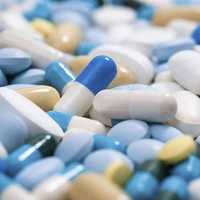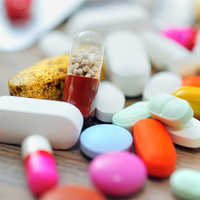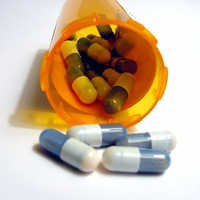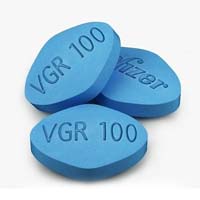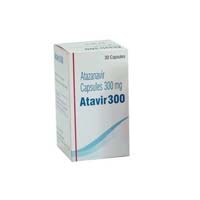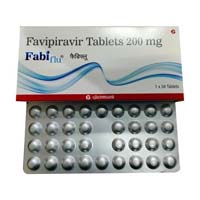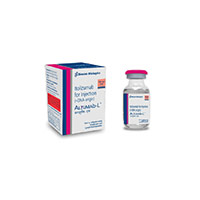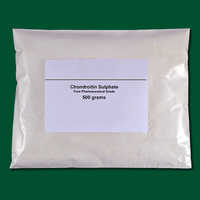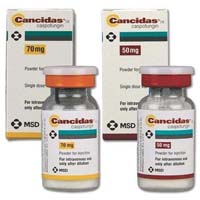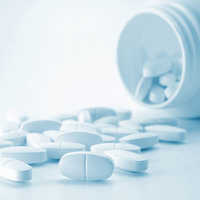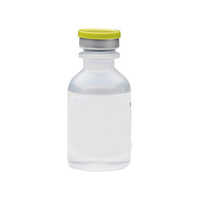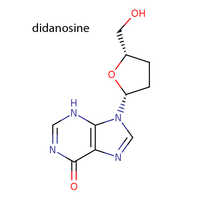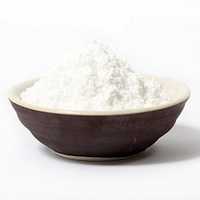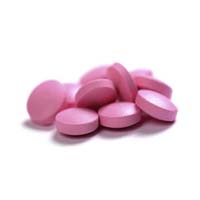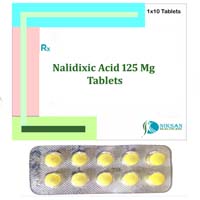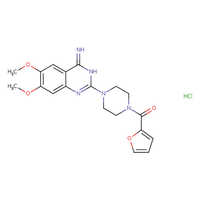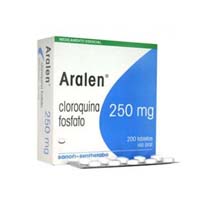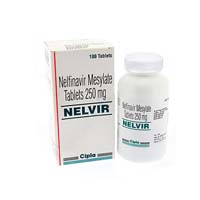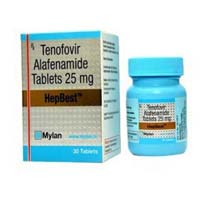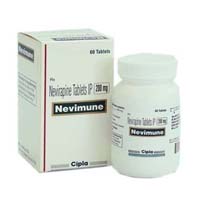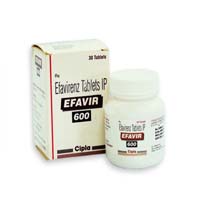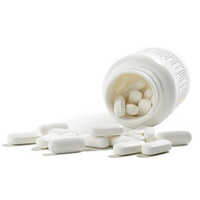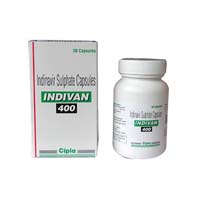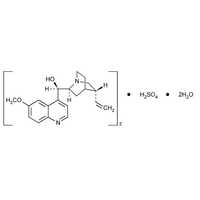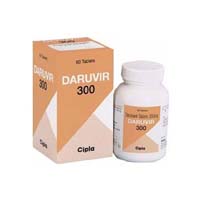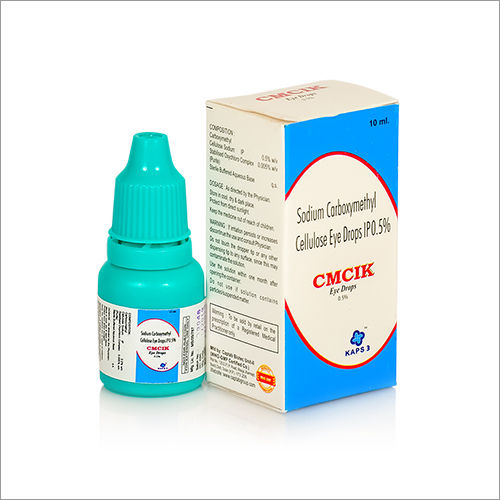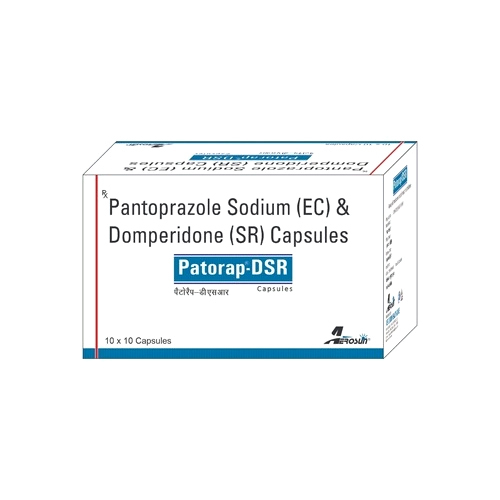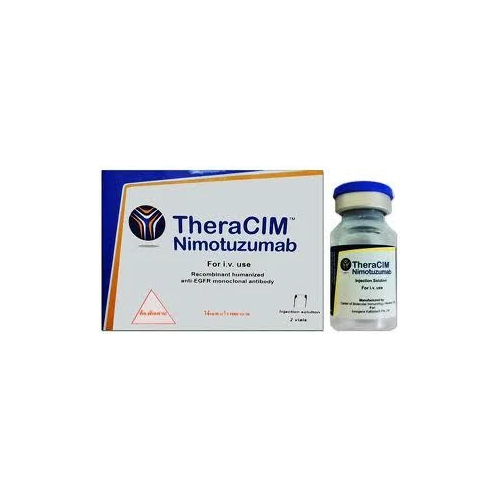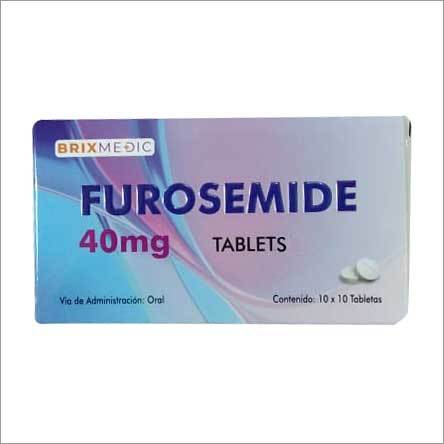Anti Infective Drugs & Medicines
(3725 products)
Related Categories
Adult Diapers
Anti Infective Drugs & Medicines
Ayurvedic & Herbal Powder
Ayurvedic Medicines & Products
Baby & Infant Products
Bath Products
Beauty Equipment
Beauty Products
Bio-technology Products
Brain & Nervous System Drugs
Breast Care Products
Cancer, TB & Tumor Drugs
Cardiovascular Drugs
Common Medicines & Drugs
Contact Lenses
Contraceptives & Condoms
Cosmetic Accessories
Cosmetics
Cotton Buds
Dietary Supplements
Disinfection Equipment
ECG Paper
EMU Oil Products
Empty Capsules
Essential Oils & Aromatics
Eye & Ear Drops
Hair Care Products
Health Care Equipment
Health Food
Healthcare & Hygiene Products
Henna & Henna Products
Herbal & Botanical Products
Herbal Medicine
Homeopathic Medicines
Immunization & Vaccination Drugs
Massager
Nail Care Products
Natural Herbs
PCD Pharma
Pain Relief Drugs & Medicines
Pediatric Medicines
Perfumes & Fragrances
Personal Care Products
Personal Safety Equipment
Pharmaceutical Ointments & Creams
Plant & Animal Oil
Plant Extract
Salon & Spa Equipment
Shaving Razor & Products
Skin Care Products
Soap & Hand Wash
Toothpaste & Tooth Brush
Veterinary Medicine
Weight Loss Products
Top Anti Infective Drugs & MedicinesCategories
Explore More Categories
Product Showcase
Nimotuzumab Injection Grade: Medical Grade
Price: 29000 INR (Approx.)
MOQ - 10 Pack/Packs
Grade - Medical Grade
Storage - Keep dry & cool place
Medicine Type - Nimotuzumab Injection
12 Years
Business Type: Manufacturer | Distributor
DHEER HEALTHCARE PRIVATE LIMITED
Verified Exporter
( Accepts only Foreign Inquiry)
Furosemide 40 Mg Tablet Storage: Keep Dry & Cool Place
Price: 20 INR (Approx.)
MOQ - 100000 Box/Boxes
Dosage - As per physician
Appearance - Tablet
Storage - Keep dry & cool place
4 Years
Response Rate: 76.32%
Business Type: Manufacturer | Supplier
BRIX BIOPHARMA PVT LTD
Verified Exporter
( Accepts only Foreign Inquiry)
Amphotericin B Injection I.P.
Price: 250.00 - 270.00 INR (Approx.)
MOQ - 50 Piece/Pieces
Storage - 2 to 8 Degree Celcius
Expiration Date - 2 Years
12 Years
Response Rate: 70.59%
Business Type: Manufacturer | Exporter
LEXICARE PHARMA PVT. LTD.
Verified Exporter
( Accepts only Foreign Inquiry)
Scinflox - T Tablets Storage: Keep In Cool
MOQ - 50 Box/Boxes
Dosage - As directed by the physician
Storage - Keep in cool, dark & dry place.
Medicine Type - Scinflox - T Tablets
4 Years
Response Rate: 75.00%
Business Type: Manufacturer | Exporter
SCINDIA PHARMA
Xith 250 Mg Tablets Cas No: 83905-01-5
Price: 10.00 - 100.00 INR (Approx.)
MOQ - 1000 Piece/Pieces
Medicine Type - Antibiotic
Storage - Store below 30AdegC
Molecular Formula - C38H72N2O12
9 Years
Response Rate: 75.71%
Business Type: Supplier | Exporter
VEA IMPEX (I) PRIVATE LIMITED
Verified Exporter
( Accepts only Foreign Inquiry)
Revofer (Ferric Carboxymaltose) Injection Expiration Date: Oct 2022 Years
Price: 3000 INR (Approx.)
MOQ - 50 Bottle/Bottles
Medicine Type - ferric carboxymaltose
Dosage - 500mg
Expiration Date - oct 2022 Years
8 Years
Business Type: Distributor | Exporter
BIOGEN INDIA
Trustiva Tablets
Price: 1500.00 - 2100.00 INR (Approx.)
MOQ - 1 Tablet
7 Years
Business Type: Distributor | Exporter
Welcome Healthcare
Azithromycin Tablets Ip `
MOQ - 1 Unit/Units
Storage - Dry Place
Medicine Type - Tablet
Dosage - As per doctor
18 Years
Business Type: Manufacturer | Supplier
CENTURION REMEDIES PRIVATE LIMITED.
Darunavir tablets 600mg
Price: 8998.69 INR (Approx.)
MOQ - 10 Pack/Packs
Drug Type - Other Types
Physical Form - Tablets
Function - Anti-Viral
9 Years
Business Type: Manufacturer | Exporter
OCEAN PHARMACEUTICAL
Verified Exporter
( Accepts only Foreign Inquiry)
Liquid M-Proud-125 Injection
Price: 125.00 - 155.00 INR (Approx.)
MOQ - 10 Box/Boxes
Drug Type - Injection
Physical Form - Liquid
Dosage - 125mg
10 Years
Business Type: Manufacturer | Distributor
TALENT HEALTH CARE
Doxysafe-100 Mg Injection (Doxycycline)
Price: 60 INR (Approx.)
MOQ - 10 Milligram/Milligrams
Medicine Type - Injection
16 Years
Business Type: Manufacturer | Distributor
SAFECON LIFE SCIENCES
Antibiotics Tablets Application: Bacteria
Price: 168.00 - 1000.00 INR (Approx.)
MOQ - 100 Box/Boxes
Application - Bacteria
Formulations Type - General Drugs
Formulations Form - Tablets
17 Years
Response Rate: 75.36%
Business Type: Manufacturer | Supplier
SCHWITZ BIOTECH
Verified Exporter
( Accepts only Foreign Inquiry)
Tenofovir Disoproxil Fumarate Tablets Expiration Date: 3 Years
Price: 3900.00 INR (Approx.)
MOQ - 10000 Tablet
Medicine Type - HIV
Appearance - Tablet
Dosage - As per doctor
10 Years
Response Rate: 96.77%
Business Type: Manufacturer | Exporter
AMBICA PHARMA
Sofosbuvir 400 mg Tablets
Price: 8500 INR (Approx.)
MOQ - As per requirement Bottle/Bottles
Drug Type - General Medicines
Physical Form - Tablets
Recommended For - HIV and Anti Viral
6 Years
Business Type: Manufacturer | Distributor
MEHADIA TRADELINKS
Verified Exporter
( Accepts only Foreign Inquiry)
Cephalexin Dry Syrup
Price: 10-15 USD ($) (Approx.)
MOQ - 1000 Bottle/Bottles
4 Years
Response Rate: 84.06%
Business Type: Manufacturer | Supplier
WEEFSEL PHARMA
Verified Exporter
( Accepts only Foreign Inquiry)
Viraday Tablets Allopathic
Price: 3900 INR (Approx.)
MOQ - 100 Bottle/Bottles
Dosage - Directed By The Physician.
Medicine Type - Allopathic
Storage - Below Room Temperature 30AdegC, Protected From Light.
12 Years
Business Type: Exporter | Trading Company
P.B.P ENTERPRISES PRIVATE LIMITED
Tenvir- Em Storage: Keep Dry & Cool Place
Price: 500 INR (Approx.)
MOQ - 100 Bottle/Bottles
Appearance - Tablet
Storage - Keep dry & cool place
Medicine Type - TENVIR- EM
9 Years
Business Type: Distributor | Exporter
WAGHESHWARI IMPEX PRIVATE LIMITED
Verified Exporter
( Accepts only Foreign Inquiry)
Antibiotics Medicines Expiration Date: 24 Months
Price: 5000.00 - 10000.00 INR (Approx.)
MOQ - 10000 Box/Boxes
Grade - Medicine Grade
Dosage - As Prescribed By The Physician
Storage - Store In Cold/Dry Place
18 Years
Business Type: Manufacturer | Exporter
MEDICO REMEDIES LTD
Minocycline Tablets External Use Drugs
Price: 3700.00 - 4800.00 INR (Approx.)
MOQ - 250 Piece/Pieces
Purity - 99%
Molecular Formula - C_{2} H_{2} 3
Formulations Type - External Use Drugs
8 Years
Business Type: Distributor | Supplier
EDERMA PHARMA INDIA PRIVATE LIMITED
500mg Flucloxacillin Capsules BP
Price: 4.00 - 5.00 INR (Approx.)
MOQ - 3000 Box/Boxes
4 Years
Business Type: Manufacturer | Exporter
MEDYRA PHARMACEUTICAL
Cefepime Injection Cas No: 88040-23-7
Price: 6.5 USD ($) (Approx.)
MOQ - 1000 Unit/Units
CAS No - 88040-23-7
Molecular Formula - C19H24N6O5S2
Formulations Type - Injectables
10 Years
Business Type: Manufacturer | Distributor
SALVAVIDAS PHARMACEUTICAL PVT. LTD.
Verified Exporter
( Accepts only Foreign Inquiry)
Ciprofloxacin Film-Coated Tablets 1x10 Tablets Pack
Price: 80 INR (Approx.)
Dosage - 250mg, 500mg
Appearance - Tablets
Grade - BP
1 Years
Business Type: Manufacturer | Exporter
VITASV PHARMA AND CHEMICAL PRIVATE LIMITED
Metabolism boost protein powder
Price: 350 INR (Approx.)
MOQ - 500 Piece/Pieces
3 Years
Business Type: Manufacturer | Supplier
NUTRALIKE HEALTH CARE
Darunavir 300Mg Tablets (Generic Prezista) Cold & Dry Place
Price: 92 USD ($) (Approx.)
MOQ - 10 Pack/Packs
Storage - Store below 30AdegC
Dosage - As Suggested by Doctor
Usage - Treatment of HIV infection
3 Years
Business Type: Manufacturer | Exporter
CYTONOVA LABS INTERNATIONAL PRIVATE LIMITED
Verified Exporter
( Accepts only Foreign Inquiry)
Piperacillin And Tazobactam Injection 4.5 Gram Grade: Medical
MOQ - 1000 Piece/Pieces
Medicine Type - Anti Infective Drug
Grade - Medical
Dosage - As per docotor
2 Years
Business Type: Distributor | Exporter
PHP Lifesciences LLP
Endobloc 10 Mg Tablet Application: Hospital
Price: 2176 USD ($) (Approx.)
MOQ - 10 Piece/Pieces
Application - Hospital
Purity - 100%
Formulations Type - Other Types
9 Years
Response Rate: 92.41%
Business Type: Manufacturer | Distributor
AKSHAR PHARMA
Verified Exporter
( Accepts only Foreign Inquiry)
Anti Infective Drugs & Medicines Manufacturers | Suppliers in India
| Company Name | Location | Member Since |
|---|---|---|
| Centurion Remedies Private Limited. | Vadodara, India | 18 Years |
| Medico Remedies Ltd | Mumbai, India | 18 Years |
| Schwitz Biotech | Ahmedabad, India | 17 Years |
| Safecon Life Sciences | Rudrapur, India | 16 Years |
| Dheer Healthcare Private Limited | Mumbai, India | 12 Years |
| Lexicare Pharma Pvt. Ltd. | Ankleshwar, India | 12 Years |
| P.B.P Enterprises Private Limited | Mumbai, India | 12 Years |
| Talent Health Care | Ahmedabad, India | 10 Years |
| Ambica Pharma | Mumbai, India | 10 Years |
| Salvavidas Pharmaceutical Pvt. Ltd. | Surat, India | 10 Years |
Anti Infective Drugs & Medicines: Classification
Anti-infective are pharmaceuticals used to treat or prevent infections; they can be categories into four types
a. Bacteria anti infective Drugs
b. Viruses anti infective drugs
c. Fungi anti infective Drugs
d. Parasites anti infective Drugs
Since their discovery, anti-infective have changed the medical field. They are now essential for treating and even preventing many different types of infection.
a. Aside from treating common colds and flu, antibiotics can also be used to treat and frequently completely eradicate more dangerous infections like pneumonia and tuberculosis.
b. Carry out both simple and sophisticated surgical procedures, including those with a high potential for infection such cesarean sections and joint replacements.
c. Chemotherapy and other immunosuppressive treatments are essential for cancer patients.
Antimicrobial resistance is a serious problem, reducing the efficacy of several anti-infectives (AMR).
Types of Anti-Infective Drugs & Medicines
1. Amebicides
Agents that kill or destroy amoebae are called "amebicides." Different types of amecides work in various ways. Humans and animals alike can benefit from their use, as they kill off amebae that cause disease.
2. Penicillins
Antibiotics called penicillins are isolated from the Penicillium fungus. When taken orally, antibiotics reduce or eliminate bacterial growth.
3. Oxazolidinon Antibiotics
The ribosomal 50S subunit of bacteria is targeted by oxazolidinone antibiotics, a type of synthetic antibacterial medicines. That's bad news because reproducing bacteria needs the 70S initiation complex to develop.
4. Miscellaneous Antibiotics
The term "miscellaneous antibiotics" refers to antibiotics that are the sole treatment option for their respective infections. Antibiotics from a wide variety of classes are used to treat illnesses brought on by bacteria and other organisms that are vulnerable to the drugs they are designed to combat.
5. Macrolide derivatives
Antibiotics belonging to the macrolide class are produced by streptomycetes. They are large-ring lactones found in nature, containing anywhere from 14 to 20 atoms in the ring. Macrolides prevent protein synthesis in bacteria by binding to the 50S component of the ribosome and blocking ribosomal translocation.
6. Lincomycin Derivatives
Protein synthesis is crucial to bacterial survival, and lincomycin derivatives are one of the few classes of antibiotics that work against this process. When dealing with infections caused by sensitive strains of pneumococci, staphylococci, or streptococcus, only lincomycin derivatives should be used.
7. Leprostatics
The expansion of Mycobacterium leprae, the bacterium responsible for leprosy, is slowed by leprostatic agents. Leprostatic agents can either actively kill the growing mycobacteria or they can inhibit bacterial growth, each with their own unique mechanism of action.
8. Glycylcyclines
Antibiotics in the glycocycline family prevent bacterial growth by interfering with the process of protein synthesis. They are effective against tetracycline-resistant bacteria as well as sensitive gram-negative and gram-positive bacteria. Antibiotics in the glycylcycline family are effective against bacteria that have developed resistance to other drugs. This includes MRSA, VRE, and Pseudomonas aeruginosa, to name a few.
9. Glycopeptide antibiotics
Antibiotics belonging to the glycopeptide class prevent peptidoglycan production, hence preventing the development of bacterial cell walls. Infections caused by bacteria that are resistant to beta-lactams and other antibiotics, such as multi-resistant Staphylococcus aureus (MRSA) and enterococcal infections, can be treated with these drugs. As an added benefit, they can be utilized when a patient has an allergy to beta-lactams.
10. Cephalosporins
Antibiotics belonging to the cephalosporin class are generated from the fungus Acremonium, formerly known as Cephalosporium. Similar to penicillins, cephalosporins are bactericidal (kill bacteria).
11. Carbapenems
Beta-lactam antibiotics like carbapenems are effective against a wide variety of gram-positive and gram-negative bacteria, both aerobic and anaerobic. In 1976, the first carbapenem, thienamycin, was found. Antibiotics such as penicillin and cephalosporin are significantly weakened by the presence of beta-lactamase enzymes, often known as penicillinase. Carbapenems are famous for their ability to block these enzymes.
12. Antiviral Agents
Disease-causing viruses can be stopped in their tracks with the use of antiviral drugs. The window of time in which most antiviral drugs are effective is narrow, as viruses are often only active during replication. Since viruses share most of the metabolic processes of the host cell, finding treatments that are selective for the virus is challenging. Antiviral medications could be directed at viruses by targeting their unique enzymes.
13. Antituberculosis Agents
Chemotherapy for tuberculosis typically includes administering multiple medicines at once. Distinct drug classes inhibit the development of drug-resistant strains of Mycobacterium because they target different aspects of the organism.
14. Linezolid
There is a new class of antibiotics called oxazolidinones, which includes linezolid. Indicated for the treatment of multidrug-resistant infections, it kills bacteria by blocking their ability to produce new proteins. Linezolid use during pregnancy has been reported in only one case study.
Anti Infective Drugs Uses & Side Effects
Anti Infective Drugs are normally administered orally. They can be injected or used topically by doctors to the infected area.
Anti Infective Drugs usually start acting within a few hours. For the best results, patients should take all of their prescribed medication as directed by their doctor.
It is more likely that the germs will develop resistance to future treatments if the drug is stopped before the whole course has been taken. The ones who make it through will have been exposed to the antibiotic and may develop resistance.
Even if your symptoms have subsided, it is still important to finish the full course of Anti Infective Drugs.
Instructions for proper dosing can be found in both the drug's accompanying booklet and your doctor's notes.
In order to make the most of Anti Infective Drugs, there are a few things people can do.
a. If you're taking metronidazole, don't drink alcohol.
b. If you're taking tetracyclines, it's best to avoid dairy items because they can interfere with the drug's absorption.
c. Consistent dosing occurs when medication is taken at the same time each day or at regular intervals throughout the day.
Side Effects:
1. Superinfections
Overuse of broad-spectrum antimicrobials can wipe out healthy bacteria. When normal flora bacteria are removed, opportunistic pathogens that were previously kept in check are free to penetrate tissues, causing an infection known as a superinfection.
2. Hypersensitivity Reactions
The vast majority of Anti Infective Drugs & Medicines are protein-bound, meaning they can be transported through the bloodstream and provoke antibody production in susceptible individuals.
3. Neurotoxicity
Certain antimicrobials, particularly those that tend to concentrate in certain organs or tissues, might cause damage to or interfere with the normal functioning of nerve tissue. Aminoglycoside antibiotics, for instance, have been linked to symptoms including wooziness, vertigo, and even hearing loss due to their tendency to accumulate in the eighth cranial nerve.
4. GI toxicity
A number of antimicrobials have toxic effects on the GIT lining, leading to gastrointestinal symptoms such nausea, vomiting, stomach pain, and diarrhea. Hepatitis and liver failure can be caused by the harmful effects that some medicines have on the liver.
5. Kidney Damage
Aminoglycosides and other drugs have a direct toxic effect on the kidney's delicate cells, leading to renal impairment or even failure.
Anti Infective Vs Antibiotic
Anti Infective
Something with the ability to combat infections, either by slowing their progress or eliminating them entirely. The word "anti-infective" is broad enough to include drugs that kill not just bacteria and viruses but also fungi, protozoa, and worms. The term "anti-infective agent" refers to a class of medications used to combat infectious microorganisms that have invaded the human body.
Antibiotic
Antibiotics are prescribed to patients who have been diagnosed with bacterial or fungal illnesses. When first discovered, antibiotics were substances made by one bacteria that selectively inhibited the growth of another.
Anti Infective Drugs Examples
a. Cephalosporins
b. Fidaxomicin
c. Nitrofurantoin
d. Carbapenems and monobactams
e. Clindamycin and lincomycin
f. Tetracyclines
g. Penicillins and β-lactamase inhibitors
h. Sulfonamides and trimethoprim
i. Quinolones
j. Pentamidine
k. Erythromycin and other macrolides
l. Aminoglycosides
m. Chloramphenicol
n. Glycopeptide antibiotics
FAQs: Anti Infective Drugs & Medicines
Q. Which antibiotic is good for all infections?
Ans: Antibiotics are not a panacea; they only treat certain infections. Antibiotics are used to treat bacterial illnesses caused by pathogens like Strep., Staph.,or E. coli by directly killing the germs (bactericidal) or preventing further bacterial growth (bacteriostatic).
Q. What are the most common antibiotics?
Ans: Here are the most common antibiotics:
a. Penicillins
b. Cephalosporins
c. Tetracyclines
d. Fluoroquinolones
e. Macrolides
f. Glycopeptides
g. Sulfonamides
Q. What is Anti-Infective Drugs Market Size And Forecast?
Ans: Chemicals Used to Treat Infections At a compound annual growth rate (CAGR) of 4.3% between 2023 and 2030, the market is expected to increase from a 2022 valuation of USD 132.16 Billion to a 2030 total of USD 193.05 Billion.
Q. How can I become Anti-Infective Drugs suppliers in India?
Ans: Anti Infective Drugs production is a natural process that can now be mimicked and even improved upon in lab conditions, all thanks to scientific progress. Here are the steps to follows:
a. Must have a medical degree
b. Farm Registration
c. License
d. Hire an experienced business consultant
e. Choose the right equipment
f. Find a supplier
g. Make a website or brand
h. Jump on the B2b market place
Related Categories
Related Categories
Adult Diapers
Anti Infective Drugs & Medicines
Ayurvedic & Herbal Powder
Ayurvedic Medicines & Products
Baby & Infant Products
Bath Products
Beauty Equipment
Beauty Products
Bio-technology Products
Brain & Nervous System Drugs
Breast Care Products
Cancer, TB & Tumor Drugs
Cardiovascular Drugs
Common Medicines & Drugs
Contact Lenses
Contraceptives & Condoms
Cosmetic Accessories
Cosmetics
Cotton Buds
Dietary Supplements
Disinfection Equipment
ECG Paper
EMU Oil Products
Empty Capsules
Essential Oils & Aromatics
Eye & Ear Drops
Hair Care Products
Health Care Equipment
Health Food
Healthcare & Hygiene Products
Henna & Henna Products
Herbal & Botanical Products
Herbal Medicine
Homeopathic Medicines
Immunization & Vaccination Drugs
Massager
Nail Care Products
Natural Herbs
PCD Pharma
Pain Relief Drugs & Medicines
Pediatric Medicines
Perfumes & Fragrances
Personal Care Products
Personal Safety Equipment
Pharmaceutical Ointments & Creams
Plant & Animal Oil
Plant Extract
Salon & Spa Equipment
Shaving Razor & Products
Skin Care Products
Soap & Hand Wash
Toothpaste & Tooth Brush
Veterinary Medicine
Weight Loss Products
